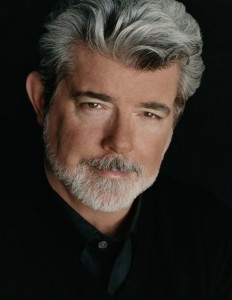 The argument at the center of “The People vs. George Lucas†doesn’t have any bearing in the real world – with all the alterations Lucas has made to his “Star Wars†trilogy, criticizing all those extra special effects hasn’t given him any incentive to leave well enough alone. In fact, if his latest 3-D do-over of the classic and prequel trilogies that kicks off next year proves anything, it’s that the whole endeavor is a fool’s errand because of the ever-changing abilities of the gadgets at his disposal. Though it’d be fair to dismiss this documentary on the same grounds – it’s pretty much an exercise in futility – it fulfills its duty to let everyone know that Lucas got it right the first time, and that these films were better before. So there.
The argument at the center of “The People vs. George Lucas†doesn’t have any bearing in the real world – with all the alterations Lucas has made to his “Star Wars†trilogy, criticizing all those extra special effects hasn’t given him any incentive to leave well enough alone. In fact, if his latest 3-D do-over of the classic and prequel trilogies that kicks off next year proves anything, it’s that the whole endeavor is a fool’s errand because of the ever-changing abilities of the gadgets at his disposal. Though it’d be fair to dismiss this documentary on the same grounds – it’s pretty much an exercise in futility – it fulfills its duty to let everyone know that Lucas got it right the first time, and that these films were better before. So there.
“Star Wars†devotees developed a bond with Lucas’ franchise since the first movie came along in 1977, before CGI broadened the capabilities of filmmakers everywhere. He apparently had a bigger film in mind, one containing more footage and special effects that he debuted in 1997 with new editions of its two follow-ups, “The Empire Strikes Back†and “Return of the Jedi.†Among the edits in the “Star Wars†redo include a scene he added with alien evildoer Jabba the Hutt, which basically reinforced details the audience had long since figured out. On top of everything, Jabba’s very appearance doesn’t even look that convincing.
The biggest controversy, though, involved Han Solo’s encounter with a bounty hunter named Greedo, one that leads to a gunfight. Initially, Han killed Greedo with his blaster, but after Lucas got the idea that a fugitive could never do something that extreme, he inserted a few frames of Greedo firing first, giving Han the excuse that he blasted him in self-defense. Imagine James Caan firing a couple of warning shots before those gangsters gun him down in “The Godfather.â€
The fans in this documentary probably discuss the “Han shot first†argument more than anything else, but the movie does manage to find other issues to work with, including a couple of insights about the man himself. Who did he make these films for, anyway? Does his lust for creative control have anything to do with the show-business mercenaries who kept it from him in the early stages of his career? How could anyone who knows as much about the fans’ beef as he does not do anything to assuage them? While there are no easy answers, the questions prove to be more intriguing than you might expect. Heck, even “Star Wars†agnostics can find something to like about it.
Of course, that doesn’t excuse it from getting into jams that have become all too familiar in documentaries, like how it attains feature length by beating an argument to death, and the way it bites off more than it can chew. (The film builds its case with clips from Lucas’ “Indiana Jones†movies, but does it in a way that makes it feel disjointed.) On the other hand, if you’re one of those fans who already gets in line for all things “Star Wars,†buying a ticket for something this ambitious couldn’t hurt.
This article was originally published on AllMediaNY.com

Leave a Reply